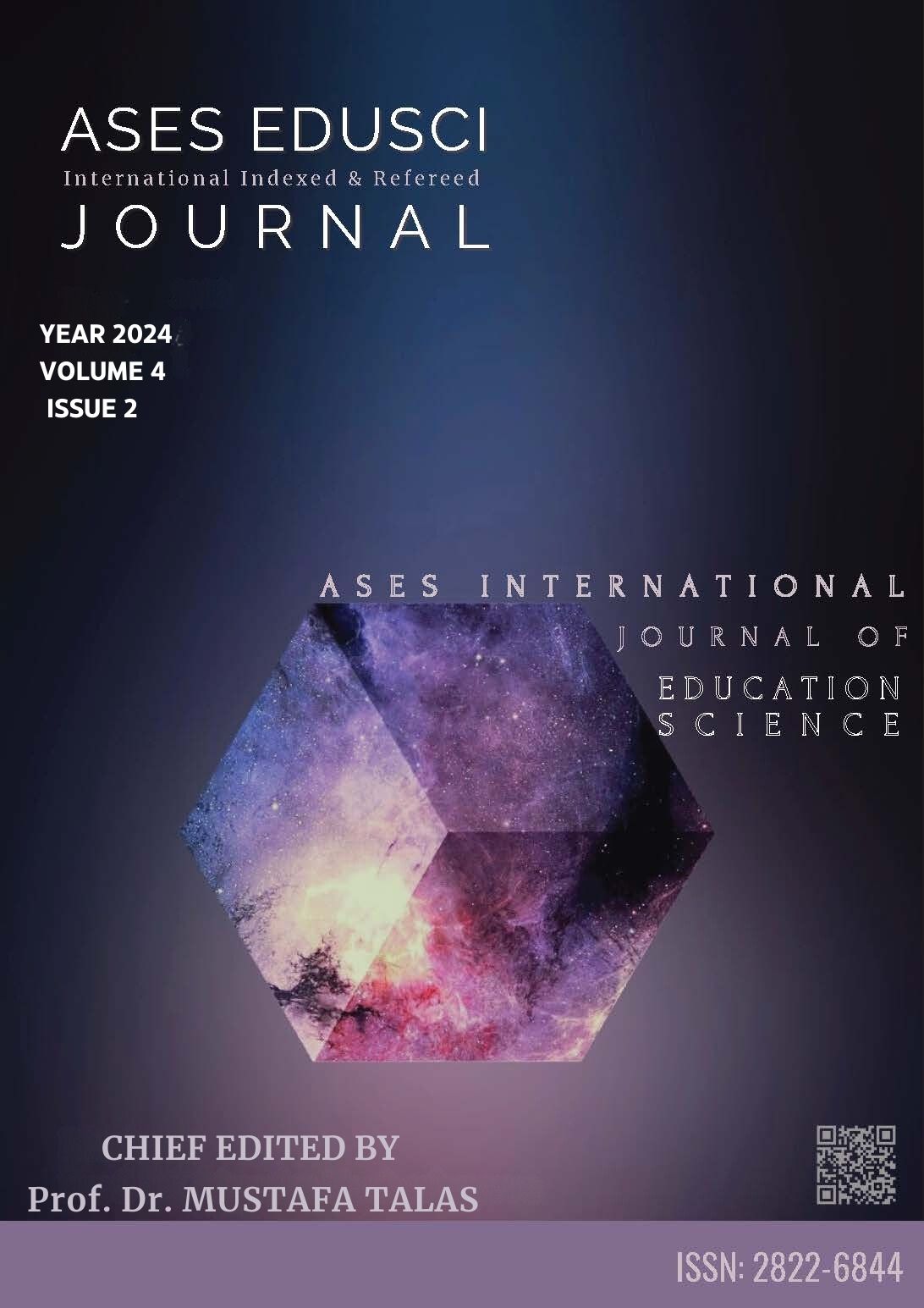The IMPACT OF WEB 2.0 TOOLS ON MIDDLE SCHOOL STUDENTS' VALUES EDUCATION: AN ANALYSIS OF TECHNOLOGY-SUPPORTED EDUCATIONAL APPLICATIONS
DOI:
https://doi.org/10.5281/zenodo.14576955Keywords:
Values, stories, Technology, Web 2.0Abstract
Our values are nurtured through education and serve as the foundation of both school activities and educational theories. Schools play a critical role in shaping values in children as they encompass teachers, peers, and families within their environment. This unique structure positions schools as significant institutions in the development of societal values (Halstead, 1996). Considering that a substantial portion of our time is spent in schools, they present a valuable opportunity to enhance this period and address areas requiring improvement.
This study aimed to examine the effectiveness of technology and Web 2.0 tools in promoting values among middle school students. A quantitative approach was adopted, utilizing a weak experimental design with a single-group pretest–posttest model. The research sample comprised 23 female students from an Imam Hatip secondary school project in the Melikgazi district of Kayseri during the 2021-2022 academic year. The “Living Values Table Scale,” developed by Assoc. Prof. Dr. Mecit Aslan, was employed as the data collection tool and administered as both a pretest and a posttest to the experimental group.
Based on the pretest results, seven values that were less emphasized in daily life were identified and distributed among the 5th, 6th, 7th, and 8th-grade classes (5/A, B, C; 6/A, B; 7/A; 8/A) for collaborative activities. Using Web 2.0 tools such as Learning Apps, students created educational games to raise awareness, which were made available for all students to engage with. Additionally, visual story series were developed using Canva. Over the course of seven weeks, each value was introduced in weekly sessions featuring a guest speaker and accompanied by the visual stories in the school’s conference hall.
Following this seven-week intervention, the posttest was administered. The results indicated that Web 2.0 tools positively influenced students’ ability to integrate values into their daily lives and contributed to an increased awareness of these values.
Keywords: Values, stories, Technology, Web 2.0
References
Akbaş, O. (2007). Türk Milli Eğitim sisteminin duyuşsal amaçlarının (değerlerinin) ilköğretim 8. sınıf öğrencilerinde gerçekleşme derecesinin değerlendirilmesi. Değerler ve Eğitimi Uluslararası Sempozyumu. Dem Yayınları.
Aslan, M. (2011). İlköğretimde karakter eğitimi ve öğrencilere kazandırılması gereken değerler, [Yüksek Lisans Tezi, Osmangazi Üniversitesi].
Aydın, M. Z. (2010). Okulda Çalışan Herkesin Görevi Olarak Değerler Eğitimi .http://www.degeregitimi.com/makaleler/makaleler.html
Aydın, İnayet. (2003). Eğitim ve Öğretimde Etik, Pegem Yayıncılık.
Büyüköztürk, Ş. (2008). Sosyal bilimler için veri analizi el kitabı. Pegem Akademi.
Büyüköztürk, S. (2012). Sosyal bilimler için veri analizi el kitabı. Pegem Akademi Yayınları.
Çağlayan, A. (2005), Ahlak Pusulası, Ahlak ve Değerler Eğitimi: DEM Yayınları.
Ekin, A. İ. (2019). Öğretmenlerin değerler eğitimi üzerinde öz yeterlik algılarının incelenmesi, [Yüksek Lisans Tezi. Siirt Üniversitesi].
Halstead, J.M. (1996). Values and Values Education in Schools. Values in Education and Education in Values. London: Falmer Pres.
Karasar, M. (2008). Bilimsel Araştırma Yöntemi. Ankara: Nobel Yayın Dağıtım.
Karasar, N. (2009). Bilimsel Araştırma Yöntemleri. 19. Baskı, Ankara: Nobel Yayın Dağıtım
Kirschenbaum, H. (1995). 100 Ways to Enhance Values And Morality in schools and Youth Settings. Massachusetts: Allyn ve Bacon Company.
Kurtulmuş, M , Tösten, R , Gündaş, A . (2014). İlköğretim 1. Kademe Öğretmenlerinin Değerler Eğitimi Sürecinde Karşılaştıkları Sorunlar. Değerler Eğitimi Dergisi.
MEB, 2010. 18. Milli Eğitim Şurası, https://ttkb.meb.gov.tr/www/milli-egitimsuralari/dosya/12 (25.10.2020).
Özkemahlı, S. (2019). II. Kademe Görsel Sanatlar Dersi Öğretmenlerinin Değerler Eğitiminin Etkileri Üzerine Görüşleri: Samsun İli Örneği [Yüksek Lisans Tezi, On Dokuz Mayıs Üniversitesi].
Ryan, K. (1993). Mining the values in the curriculum. Educational Leadership.
Stephenson Joan vd. (ed), “Values In Education,” October 23, 1997, (Çevrimiçi) http://www.fishpond.com.au/Books/Values-Education.
Veugelers, W. (2000). Different Ways Of Teaching Values. Educational Review.
Yalçınkaya, M. (2005). Okul ve Sınıf Ortamı. Öğretmenlik Mesleğine Giriş. Lisans Yayıncılık.
Yavuzer, H. (2000). Okul Çağı Çocuğu. İstanbul: Remzi Kitabevi.
Downloads
Published
How to Cite
Issue
Section
License
Copyright (c) 2024 ASES EDUSCI (INTERNATIONAL JOURNAL OF EDUCATIONAL SCIENCES) ISSN: 2822-6844

This work is licensed under a Creative Commons Attribution-NonCommercial 4.0 International License.


